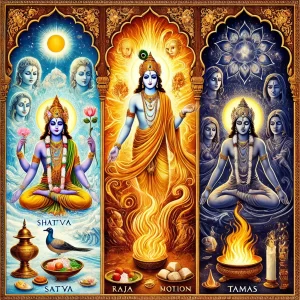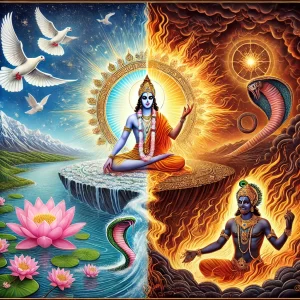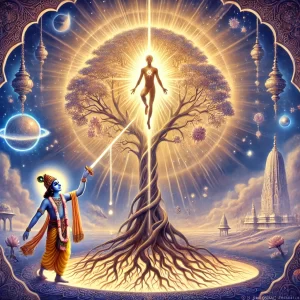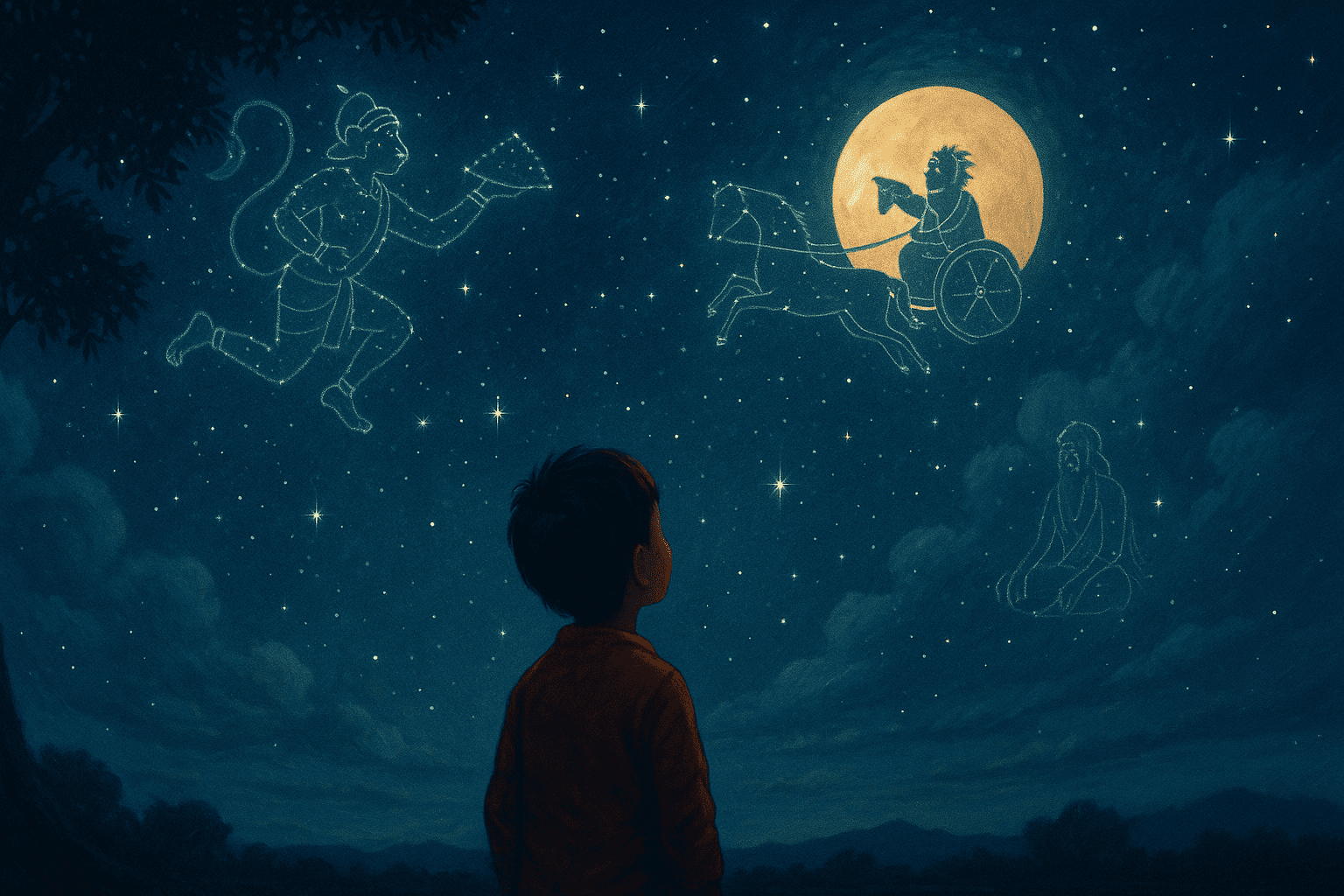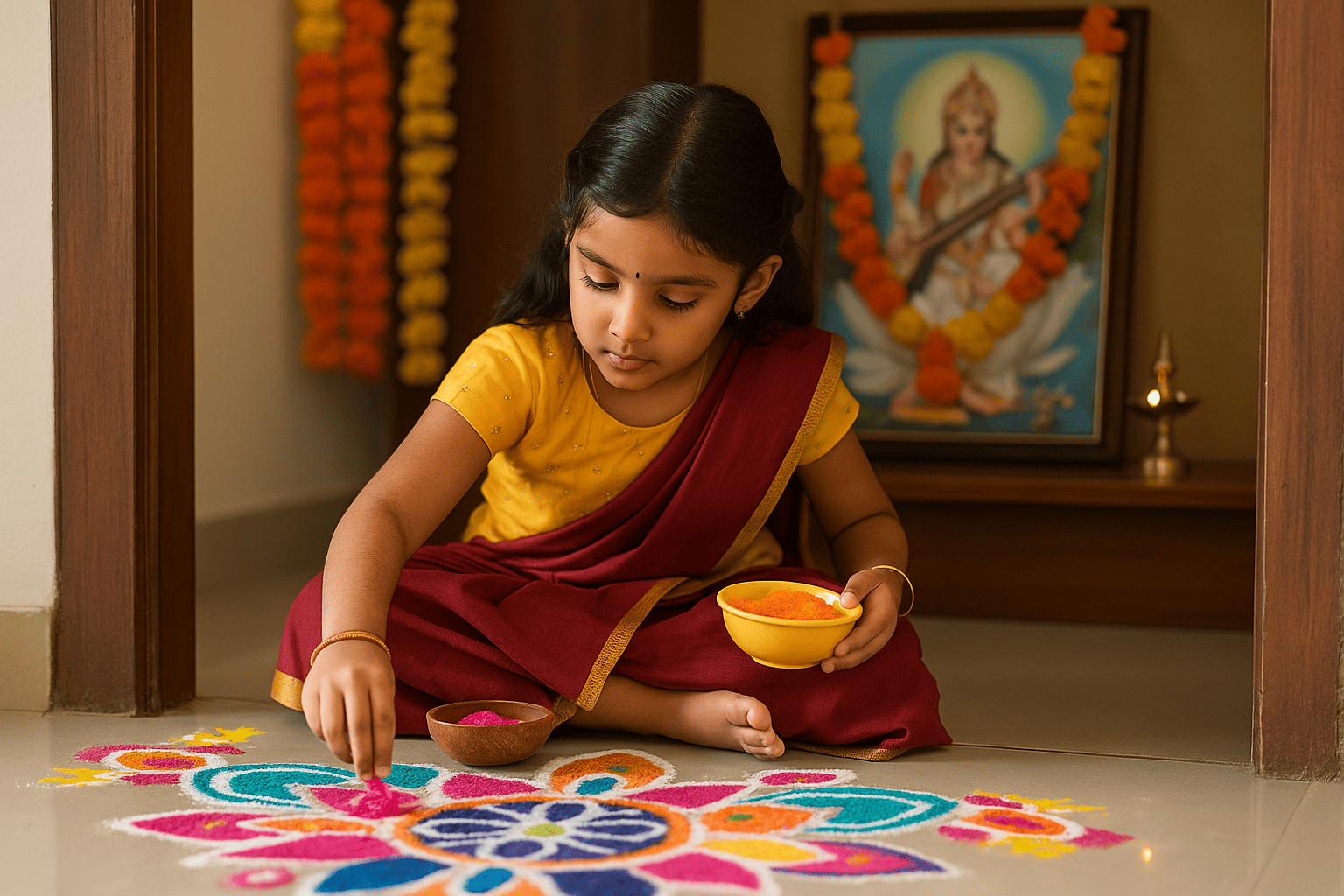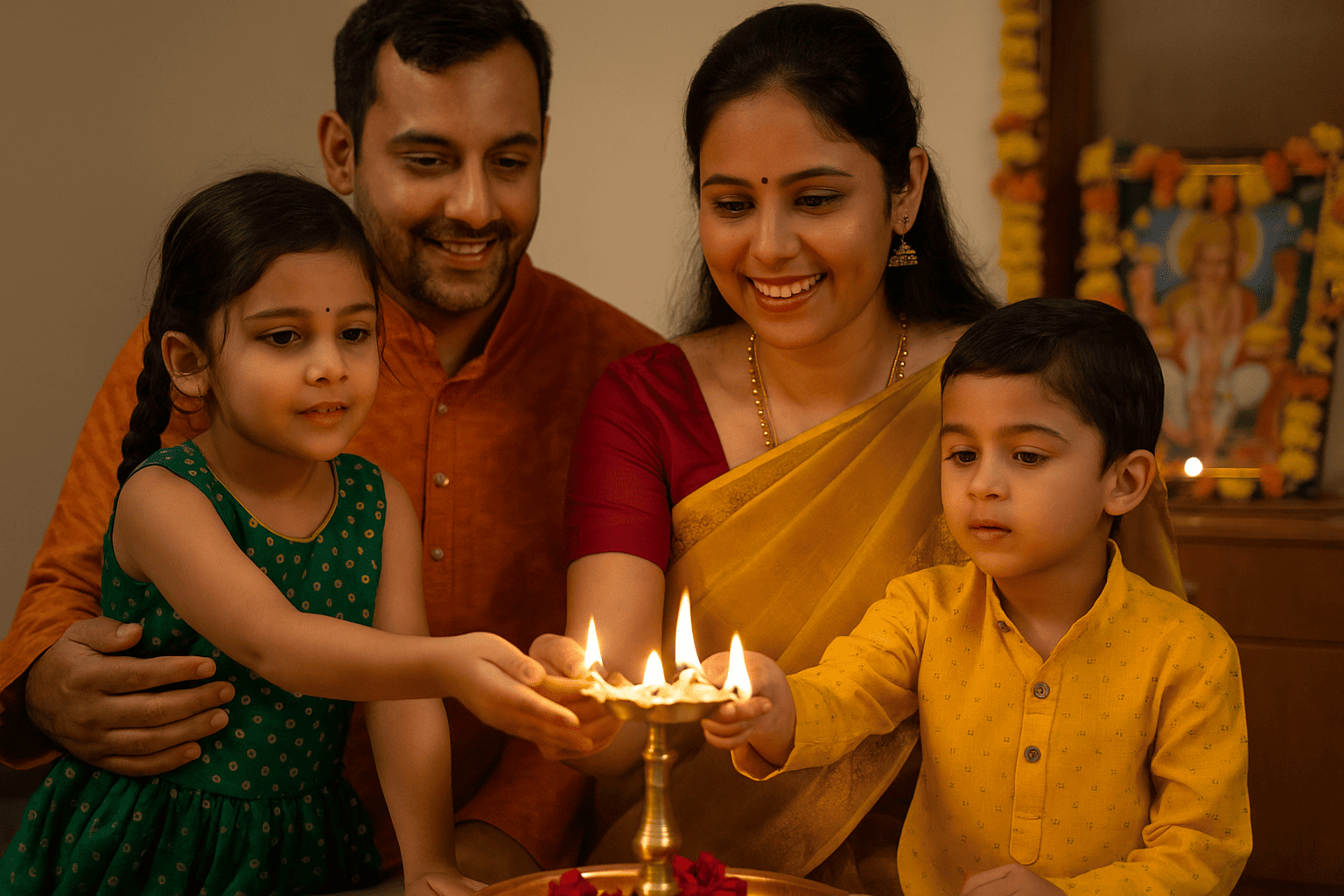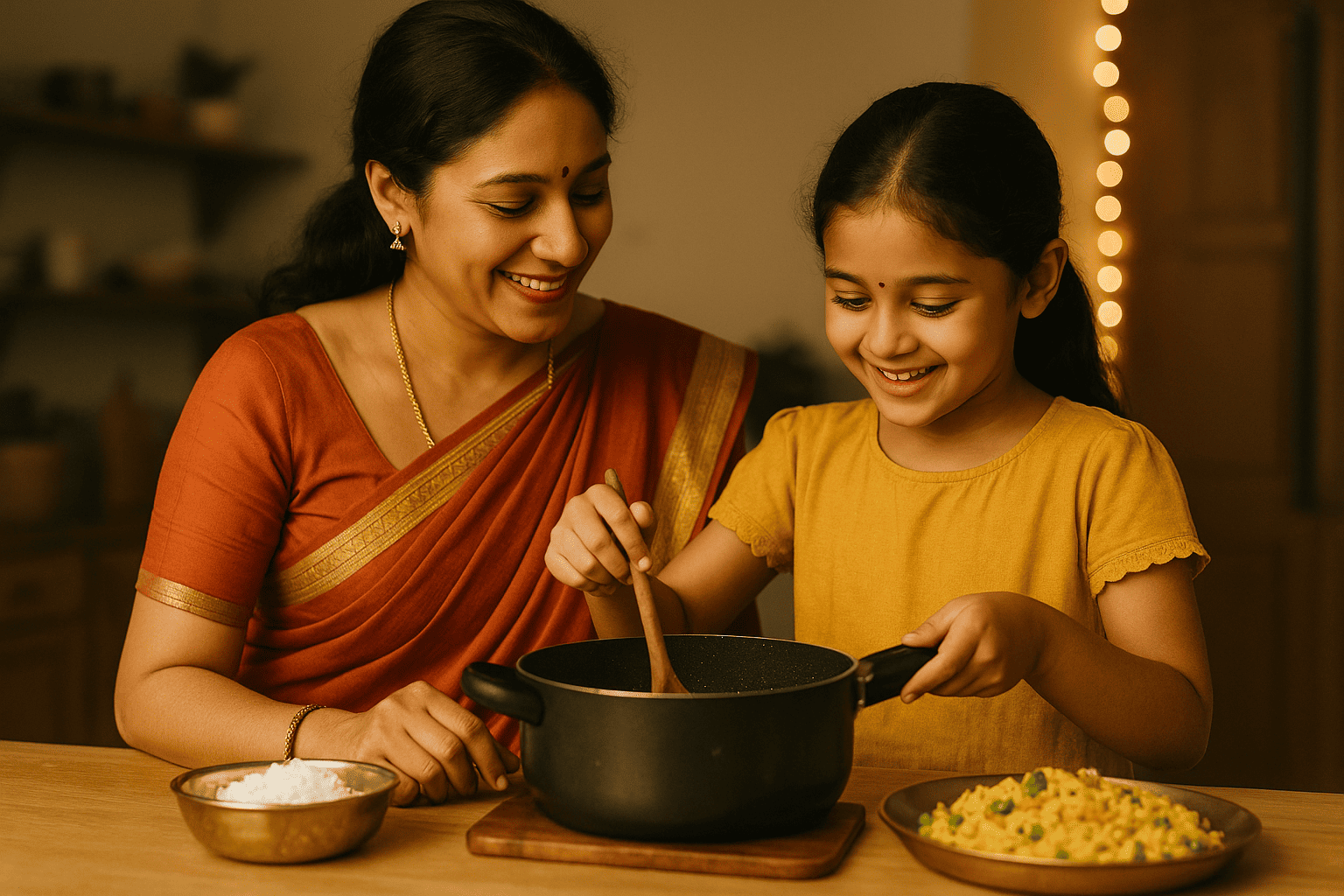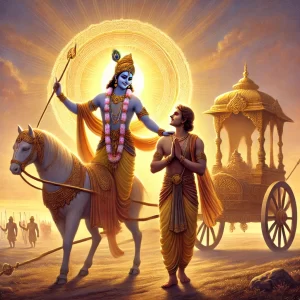
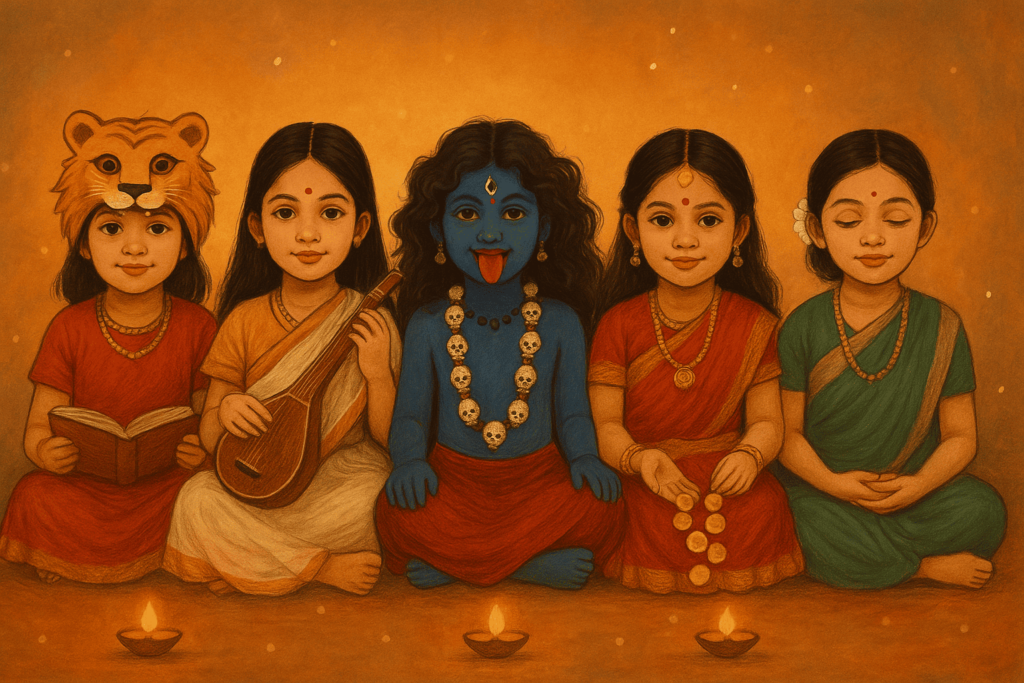
There’s something sacred in the way a child listens to a story — wide-eyed, heartbeat still, as if the world might split open and pour its magic into her lap.
And what if, from the earliest age, a girl grew up with stories that didn’t shrink her, but expand her?
What if she saw herself not as someone waiting to be saved, but as someone already divine?
In the great and endless swirl of Hindu mythology, the goddesses are not fragile, demure, or distant. They are thunder and sunlight. They are blood and gold. They are knowledge, hunger, wildness, peace. They are everything a little girl is told not to be — and yet everything she is already becoming.
To raise a child on these stories is not just an act of cultural remembrance — it is an act of quiet revolution.
For centuries, the tales of goddesses have lived in the pulse of Indian homes — recited before sleep, sung during festivals, whispered in prayers. These are not ornamental stories; they are inheritances. They are wisdom wrapped in myth, power wrapped in poetry.
But in today’s world — where girlhood is often packaged, filtered, and flattened — these stories become something even more vital.
When a girl learns about Shakti, she learns she is not made to be small. She is not a supporting character in someone else’s story. She is the story.
When she hears of Durga slaying Mahishasura, or Kali tearing down illusion with her bare hands, or Saraswati refusing noise for the sake of truth — she begins to see strength not as something to earn, but something she already holds.
Parenting today isn’t just about guiding a child through the world. It’s about helping them recognize who they are — beyond grades, beyond expectations, beyond applause. It’s about helping a girl remember that before anyone told her what she could or couldn’t be — she was already divine.
The gods had tried. Each one had gone to war and returned with wounds. Mahishasura, the shape-shifting demon, could not be defeated by any of them. So they came together, not to fight harder — but to create her.
Durga was born from their collective strength. Ten arms, each bearing a weapon. A lion beneath her feet. A storm in her gaze.
But here’s the part the stories don’t always highlight: Durga didn’t hesitate. She didn’t second-guess. She didn’t ask if she was ready. She simply rose.
What does that mean for a little girl hearing this story?
It means she learns that courage isn’t the absence of fear — it’s the choice to move forward anyway. That she doesn’t have to wait for permission. That she, too, carries the strength of many within her.
That when life demands it — she can roar.
In a world that loves noise, Saraswati is silence.
She sits beside a river, her fingers moving across the strings of a veena, her eyes turned inward. She is language, rhythm, clarity. She does not shout to be seen. She teaches that the deepest power doesn’t come from being loud — but from knowing.
To the book-loving girl, the shy one, the artist, the thinker — Saraswati is a mirror. She shows her that thought is sacred. That intelligence is not something to hide. That truth doesn’t need decoration — it needs presence.
And for the girl who hasn’t yet found her voice, Saraswati offers a whisper: you don’t need to rush. Your song will find you.
There is no goddess more misunderstood — and none more essential to the spirit of freedom.
Kali does not fit. Not in boxes. Not in expectations. Not in the roles others carve out for her. She is chaos. She is justice. She is the divine scream that comes after silence has been stretched too far.
Her tongue hangs out. Her eyes blaze. Around her neck, she wears the symbols of all she has destroyed — not out of violence, but out of necessity.
For every girl who’s ever been told to be quieter, nicer, less angry — Kali says, be all of it. Rage can be holy. Tears can be cleansing. Not all transformation is gentle. Some things must burn to be reborn.
In Kali, a girl finds permission to feel fully. And in doing so, to heal.
Lakshmi glides across water, glowing. She is wealth, yes — but not the kind that fades.
She is the richness of knowing your own value. The light that does not need to prove itself to shine.
In a world that teaches girls to hustle for their worth — to be prettier, smarter, more obedient — Lakshmi is a radical force. She teaches presence. She teaches enoughness. She teaches rest as sacred.
To tell her story is to tell a girl: You are not a product. You are a blessing.
Parvati waited. But not passively.
When Shiva retreated into his mountain silence, Parvati did not despair. She became a student of the self. She meditated. She transformed. And when she emerged, she was not just his equal — she was his awakening.
Her story is a slow, steady unfolding. It is the reminder that sometimes, becoming takes time.
That strength isn’t always fire — sometimes, it is the mountain itself.
To a growing girl, Parvati offers patience, grace, and the reminder that it’s okay to evolve. That love and power, devotion and independence, can live in the same body.
A child doesn’t need to understand every verse or mantra to feel their truth. She only needs to hear the stories — not as lessons, but as lifelines.
When she laughs boldly, she is Durga.
When she scribbles in her notebook, lost in her own world, she is Saraswati.
When she sets a boundary or says no, she is Kali.
When she walks into a room with joy in her skin, she is Lakshmi.
And when she forgives, loves, or grows in silence, she is Parvati.
We don’t teach goddesses to our daughters.
We remind them of who they already are.

